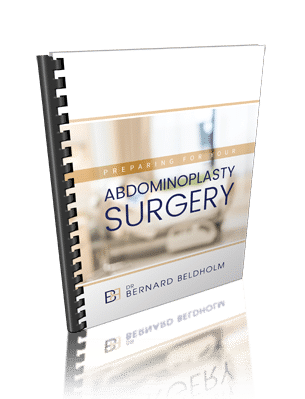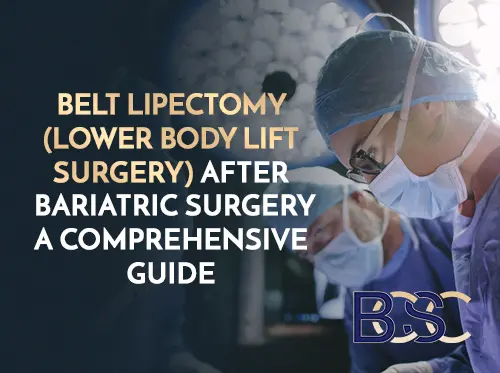8 Concerns About Pregnancy After Fleur-De-Lis Abdominoplasty Surgery
Pregnancy following Fleur-De-Lis Abdominoplasty raises concerns like abdominal muscle stretching, skin changes, scar distortion, discomfort, surgical risks, and implications on the delivery mode.
Tummy tuck (Abdominoplasty) procedures are popular for treating skin laxity and contouring the abdomen. Fleur-de-Lis is one type of abdominoplasty, common among people who have lost massive weight. Whether planned or a pleasant surprise, pregnancy after a Fleur-de-Lis abdominoplasty is also common. But what are some concerns about pregnancy after Fleur-de-Lis surgery? Let’s find out.
What Is Fleur-De-Lis Abdominoplasty
Fleur-de-Lis is a procedure that aims at reducing excess skin and tightening abdominal muscles on the upper and lower abdomen. The procedure is performed by making horizontal and vertical incisions on the abdomen to achieve optimal results. FDL has gained popularity due to the increase in weight loss procedures like Bariatric surgery.
Fleur-De-Lis Abdominoplasty can be classified as both a cosmetic and non-cosmetic procedure. When excess skin and fat on a patient affect their psychological and physical functioning, Abdominoplasty procedures are considered medically necessary. A FDL Abdominoplasty has many benefits for a patient, including firmer abdominal muscles.
According to NCBI, “[f]leur-de-lis abdominoplasty can be ** performed with complication rates comparable to those of traditional abdominoplasty techniques. Ideal candidates are patients with upper abdominal skin laxity who may not achieve an adequate aesthetic result with transverse-only excision.”
Who Is a Good Candidate for FDL Surgery?
When considering FDL Abdominoplasty surgery, it is important for patients to get professional advice from a FRACS surgeon on whether they qualify for the procedure. The surgeon weighs the patient’s needs, preferences, and existing medical conditions to determine the type of abdominoplasty procedure necessary.
Generally, FDL Abdominoplasty is a body contouring surgery that deals with excess skin after substantial weight loss through lifestyle changes or bariatric surgery. Patients qualify as good candidates for FDL Abdominoplasty if they have a normal body mass index and stable weight. Sudden weight fluctuations in a patient can lead to wound dehiscence, which causes surgical site infection.
Non-smokers are preferred FDL candidates since smoking slows down the recovery process. Dr. Benard Beldholm advises that patients quit smoking for at least six weeks before and after FDL Abdominoplasty surgery to avoid Vasoconstriction and increase the supply of oxygen in the blood.
How Long Should I Wait to Get Pregnant After FDL Abdominoplasty Surgery
Surgeons recommend a waiting period of 12 months after FDL surgery for patients to get pregnant. This waiting period gives the incision wound enough time to heal and therefore reduces the risks of complications. Waiting for 12 months also gives the abdominal muscles time to adapt to the FDL surgery results.
Changes in the abdomen during pregnancy cause stress on the freshly tightened abdominal muscles, leading to muscle re-separation (diastasis recti). It is important for patients to wait for the abdominal muscles to regain strength for mobility and posture during pregnancy. In cases where patients get pregnant before 12 months are over, corrective surgery is often sought to maintain the abdominoplasty results post-pregnancy.
Patients should consult their healthcare team for professional guidance before planning a pregnancy post-FDL abdominoplasty. The surgeon assesses the wound healing process, the strength of the abdominal muscles, and overall body health to determine the right timing for a pregnancy.

Fleur de lis tAbdominoplasty scar
Can An Abdominoplasty Incision Be Utilised for C Section?
A Fleur-de-Lis incision can be used in c-section delivery since it is made on the lower abdomen. Using the abdominoplasty incision for C-Section prevents additional scarring on the abdomen, leading to more aesthetic outcomes.
Surgeon performing the C-Section must consider the depth and location of the FDL Abdominoplasty incision to avoid any complications. In cases where the FDL incision is made below the bikini line to hide the scar, it may be difficult to perform the C-Section since the uterus may be inaccessible.
Risk Factors and Concerns
There are several risk factors and concerns associated with pregnancy after FDL abdominoplasty. Here are the major ones.
Stretching Of Abdominoplasty Muscles
During pregnancy, the body undergoes changes like belly protrusion and weight gain due to hormonal changes. It is common for pelvic floor muscles to stretch in an effort to accommodate the foetus hence compromising the results achieved through Fleur-de-lis abdominoplasty. Pregnancy after FDL surgery can affect the aesthetic results of an abdominoplasty and require additional corrective procedures.
Skin Changes
The colour and texture of the skin commonly change due to hormonal shifts during pregnancy. Skin laxity also increases, causing the results of the FDL abdominoplasty to change. In most cases, hyperpigmentation of the skin goes down after pregnancy.
Scar Distortion
Incision scars may widen or become uneven during pregnancy due to stretching of the skin. Patients can have corrective surgeries after pregnancy. This may involve scar revision surgeries.
Increased Discomfort
Pregnancy after FDL surgery causes discomfort for the mother since the abdominal muscles are surgically tightened. Stretching of the abdominal skin may also cause sensitivity around the incision area. This discomfort may necessitate additional care and management strategies to alleviate symptoms and ensure the well-being of both the mother and the new baby.
Surgical Complications
Surgical complications like the formation of a Hernia and seroma may arise during pregnancy because of the increased fluid retention. Other issues might include wound healing issues and infection. It is vital for patients to get prompt treatment to prevent further complications.
FAQs
How Should I Prepare for Pregnancy After FDL Abdominoplasty?
Preparing for pregnancy after FDL abdominoplasty requires a patient to get regular prenatal care, discuss delivery options with their surgeon, and ensure that the incision wound is healed.
Should I discuss my plans for pregnancy with my surgeon?
Yes. It is important to discuss your pregnancy plans with your surgeon to make informed decisions. The surgeon is required to tell you all the risks and considerations associated with pregnancy post-FDL pregnancy.
What If I Experience Complications During Pregnancy After FDL Abdominoplasty?
If there are any complications or physical changes in the abdomen during pregnancy, patients should contact their healthcare team for monitoring and assessment. Early detection of complications could prevent the development of issues like Hernia.
Will I Need Additional Procedures or Revisions After Pregnancy Post-Abdominoplasty?
Additional procedures post-pregnancy are determined by the patient’s desires and the impact of pregnancy on the abdominoplasty results. In most cases, patients do not require additional procedures.
Conclusion
Pregnancy post-FDL surgery comes with risks and considerations like skin changes and surgical complications. It is essential for the patients to book a consultation with their surgeon for tailored advice on when or if to get pregnant.
References
- Alhumsi, T., AlKhudairy, Y., & Mortada, H. (2023). Pregnancy one month post abdominoplasty: a case report and review of literature. Case Reports in Plastic Surgery & Hand Surgery, 10(1).
- Dellon A. L. (1985). Fleur-de-lis abdominoplasty. Aesthetic plastic surgery, 9(1), 27–32.
- Wallach S. G. (2005). Abdominal contour surgery for the massive weight loss patient: the fleur-de-lis approach. Aesthetic surgery journal, 25(5), 454–465.
- Karunaratne, Y. G., Romeo, P. B., Willis, M., & Sanki, A. (2023). The Safety and Effects of Pregnancy after Abdominoplasty: A Systematic Review of the Literature. Aesthetic plastic surgery, 47(4), 1472–1479.
- Nahas F. X. (2002). Pregnancy after abdominoplasty. Aesthetic plastic surgery, 26(4), 284–286.
- Mitchell, R. T., & Rubin, J. P. (2014). The Fleur-De-Lis abdominoplasty. Clinics in plastic surgery, 41(4), 673–680.
- Sadeghi, P., Duarte-Bateman, D., Ma, W., Khalaf, R., Fodor, R., Pieretti, G., Ciccarelli, F., Harandi, H., & Cuomo, R. (2022). Post-Bariatric Plastic Surgery: Abdominoplasty, the State of the Art in Body Contouring. Journal of clinical medicine, 11(15), 4315.
- Chen, E., Kao, C., & Ku, H. (2023). Fleur-de-lis Miniabdominoplasty Access in Radical Resection of a Large Abdominal Wall Desmoid Tumor. Plastic and Reconstructive Surgery Global Open, 11(10).
- Ali, A., & Essam, A. (2011). Abdominoplasty combined with Cesarean delivery: evaluation of the practice. Aesthetic plastic surgery, 35(1), 80–86.
- Averbuch Sagie, R., Wiser, I., Heller, L., Klein, D., & Hadad, E. (2022). Pregnancy Reverses Abdominoplasty Aesthetic Outcome: Myth or Misconception? A Cross-Sectional Study. Aesthetic surgery journal, 42(1), NP20–NP26.

